Associations of aerobic and strength exercise with clinical laboratory test values
- PMID: 29059178
- PMCID: PMC5653181
- DOI: 10.1371/journal.pone.0180840
Associations of aerobic and strength exercise with clinical laboratory test values
Abstract
Objectives: Physical exercise may affect levels of blood-based biomarkers. However, exercise status is seldom considered in the interpretation of laboratory results. This study reports the associations between habitual exercise participation and clinical laboratory test results.
Methods: The effects of days per week of aerobic and strength exercise participation on laboratory test results for 26 biomarkers in young adults aged 18 to 34 years (n = 80,111) were evaluated using percentile distribution analyses and multivariate regression.
Results: In both men and women, more days per week of either aerobic or strength exercise were significantly associated with lower levels of glucose, hemoglobin A1c, LDL cholesterol, total cholesterol, triglycerides, estimated glomerular filtration rate, globulin, and C-reactive protein, and significantly higher levels of HDL cholesterol, creatinine, iron, and percent saturation (all p < .05). Type of exercise or gender influenced the observed relationships with exercise frequency for total cholesterol, aspartate aminotransferase, gamma-glutamyl transferase, alkaline phosphatase, uric acid, bilirubin, and iron binding capacity.
Conclusions: Physical exercise shifted the distribution of results into the direction suggestive of better health. Reported relationships may help clinicians and patients to better understand and interpret laboratory results in athletic populations and possibly re-evaluate interpretation of reference intervals for physically active populations.
Conflict of interest statement
Figures


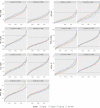

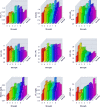
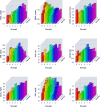

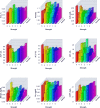
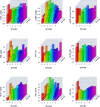
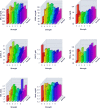
Similar articles
-
Use of total patient data for indirect estimation of reference intervals for 40 clinical chemical analytes in Turkey.Clin Chem Lab Med. 2006;44(7):867-76. doi: 10.1515/CCLM.2006.139. Clin Chem Lab Med. 2006. PMID: 16776635
-
Changes in blood lipids consequent to aerobic exercise training related to changes in body fatness and aerobic fitness.Metabolism. 2001 Jul;50(7):841-8. doi: 10.1053/meta.2001.24190. Metabolism. 2001. PMID: 11436192 Clinical Trial.
-
Effects of moderate-intensity exercise training on plasma biomarkers of inflammation and endothelial dysfunction in older patients with type 2 diabetes.Nutr Metab Cardiovasc Dis. 2006 Dec;16(8):543-9. doi: 10.1016/j.numecd.2005.09.004. Epub 2006 Jan 20. Nutr Metab Cardiovasc Dis. 2006. PMID: 17126770
-
Effects of resistance or aerobic exercise training on interleukin-6, C-reactive protein, and body composition.Med Sci Sports Exerc. 2010 Feb;42(2):304-13. doi: 10.1249/MSS.0b013e3181b117ca. Med Sci Sports Exerc. 2010. PMID: 20083961 Clinical Trial.
-
Fitness and lean mass increases during combined training independent of loading order.Med Sci Sports Exerc. 2014 Sep;46(9):1758-68. doi: 10.1249/MSS.0000000000000303. Med Sci Sports Exerc. 2014. PMID: 24518195 Clinical Trial.
Cited by
-
Body Adiposity, But Not Elements of Objectively Measured Sedentary Behavior or Physical Activity, Is Associated With Circulating Liver Enzymes in Adults With Overweight and Obesity.Front Endocrinol (Lausanne). 2021 Apr 20;12:655756. doi: 10.3389/fendo.2021.655756. eCollection 2021. Front Endocrinol (Lausanne). 2021. PMID: 33959099 Free PMC article.
-
Neurochemical and Morphological Comparisons of Motor Nerve Organoids and Spinal-Cord Explants.ACS Chem Neurosci. 2025 Jan 1;16(1):30-39. doi: 10.1021/acschemneuro.4c00625. Epub 2024 Dec 18. ACS Chem Neurosci. 2025. PMID: 39692746
-
Metabolic and Biomolecular Changes Induced by Incremental Long-Term Training in Young Thoroughbred Racehorses during First Workout Season.Animals (Basel). 2020 Feb 18;10(2):317. doi: 10.3390/ani10020317. Animals (Basel). 2020. PMID: 32085444 Free PMC article.
-
Inspiratory muscle training facilitates liberation from mechanical ventilation in subacute critically ill patients-a randomized controlled trial.Front Med (Lausanne). 2025 Jan 29;11:1503678. doi: 10.3389/fmed.2024.1503678. eCollection 2024. Front Med (Lausanne). 2025. PMID: 39944819 Free PMC article.
-
Effect of Vibrotherapy on Body Fatness, Blood Parameters and Fibrinogen Concentration in Elderly Men.J Clin Med. 2021 Jul 23;10(15):3259. doi: 10.3390/jcm10153259. J Clin Med. 2021. PMID: 34362043 Free PMC article.
References
-
- Garber CE, Blissmer B, Deschenes MR, Franklin BA, Lamonte MJ, Lee IM, et al. American College of Sports Medicine position stand. Quantity and quality of exercise for developing and maintaining cardiorespiratory, musculoskeletal, and neuromotor fitness in apparently healthy adults: guidance for prescribing exercise. Med Sci Sports Exerc. 2011;43: 1334–1359. doi: 10.1249/MSS.0b013e318213fefb - DOI - PubMed
-
- Lippi G, Brocco G, Franchini M, Schena F, Guidi G. Comparison of serum creatinine, uric acid, albumin and glucose in male professional endurance athletes compared with healthy controls. Clin Chem Lab Med. 2004;42: 644–647. doi: 10.1515/CCLM.2004.110 - DOI - PubMed
-
- CDC NCfHS. Early Release of Selected Estimates Based on Data From the National Health Interview Survey. Available from: http://www.cdc.gov/nchs/fastats/exercise.htm:.
-
- Haskell WL. The influence of exercise on the concentrations of triglyceride and cholesterol in human plasma. Exerc Sport Sci Rev. 1984;12: 205–244. - PubMed
MeSH terms
LinkOut - more resources
Full Text Sources
Other Literature Sources
Research Materials

